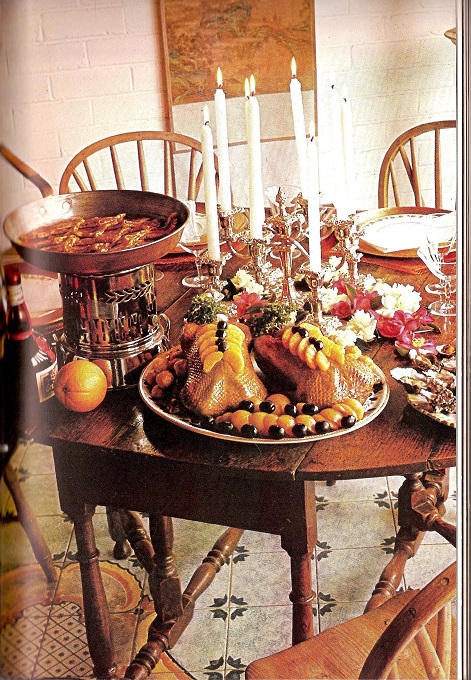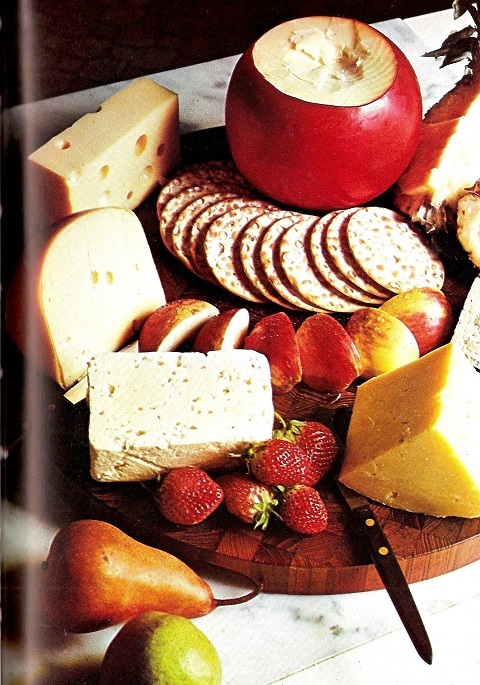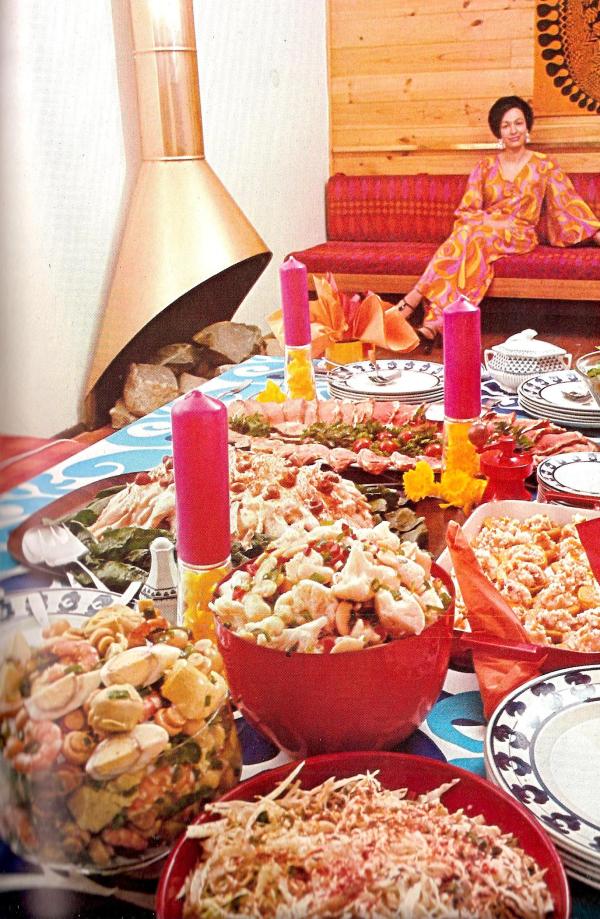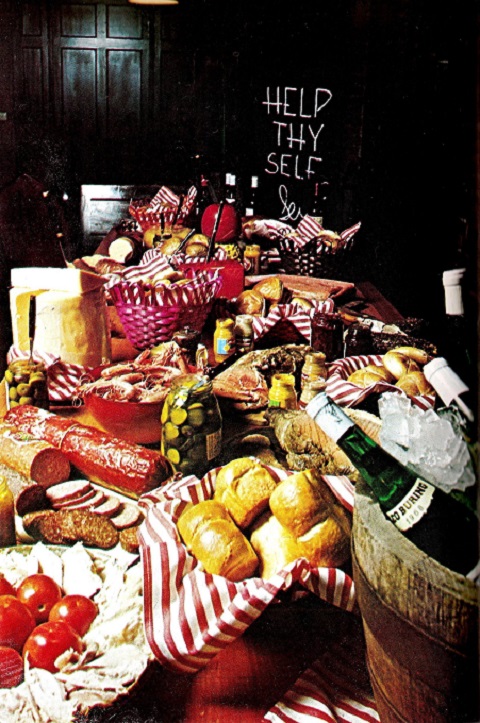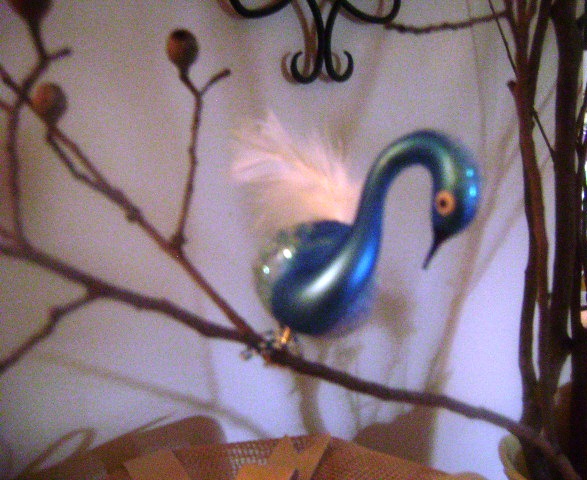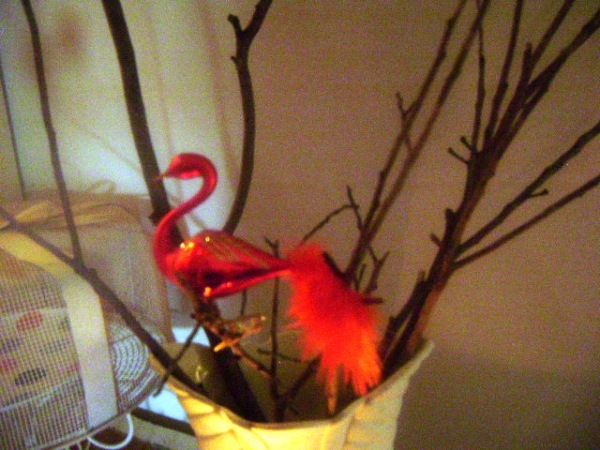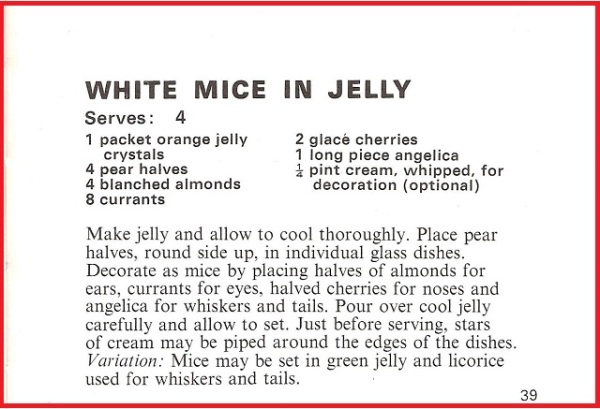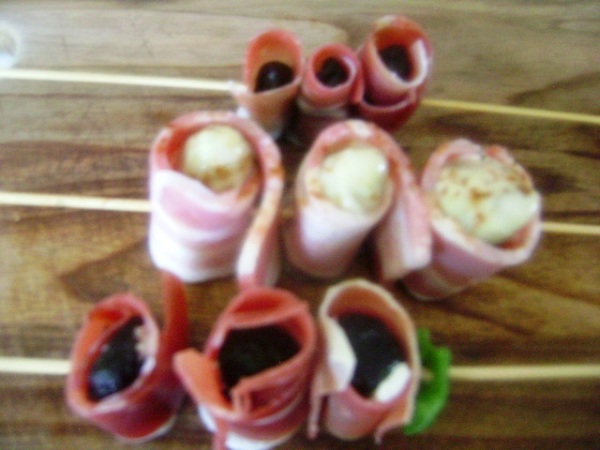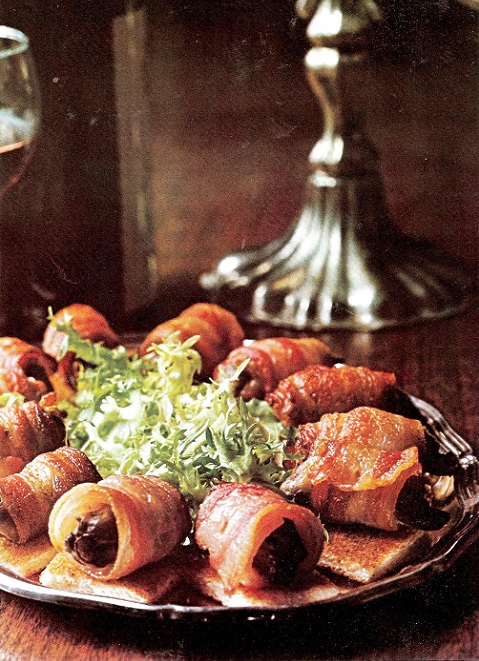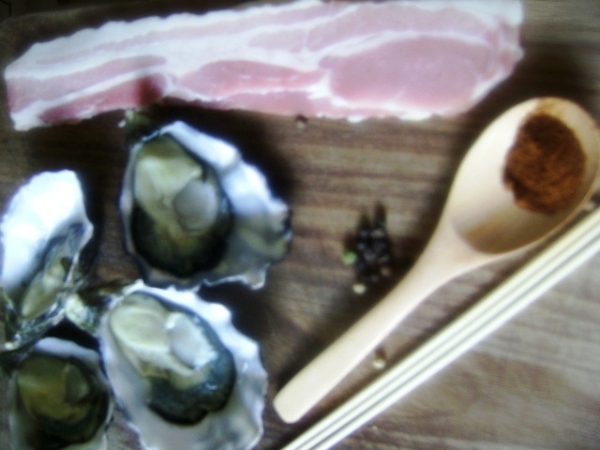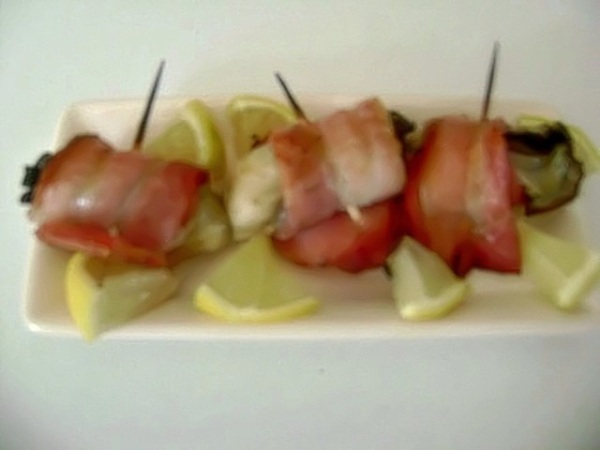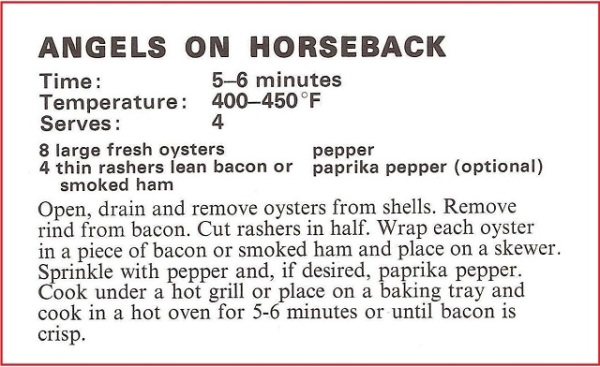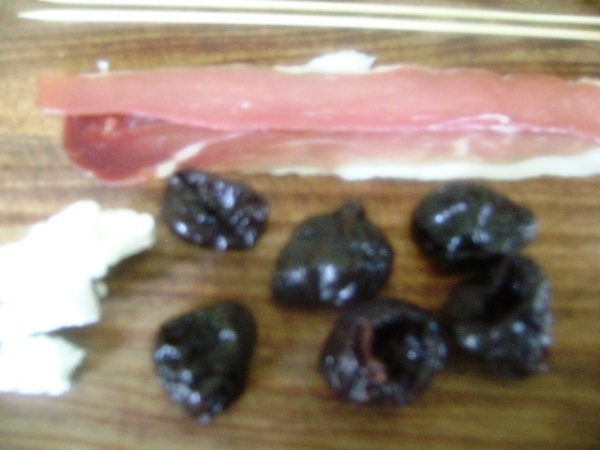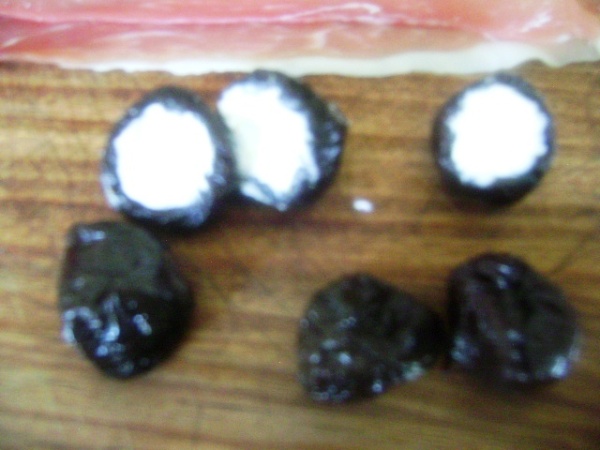Hello there, time to take a look into a new book.
Welcome to Mary Meredith’s Good Cooking for Everyone.
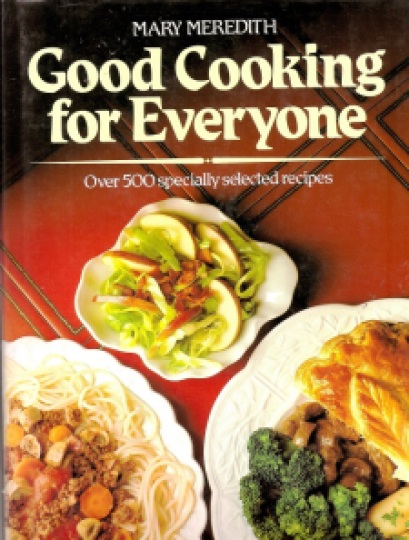
Let me just start with a little quibble. When i think of 1981, I think of this:

And not so much this:

Don’t get me wrong, I’m not having a go at Mary here. This book was first published in 1970 and this was a probably a perfectly acceptable photo back then. Eleven years later, you’d think that maybe the publishers could have forked out for a new publicity photo. Maybe one using that new technology of colour.
The 500 “specially selected recipes” in this book do address a wide audience, if not exactly everyone.
In keeping with the Livvie theme above, there are sandwiches that would suit people watching their weight:

And recipes for those who are most definitely not.
Mary calls this “California Stuffed Forehock.” I prefer to think of it as “The Reason Elvis (Permanently) Left the Building”. The prunes in the recipe could explain why he was found on the toilet.
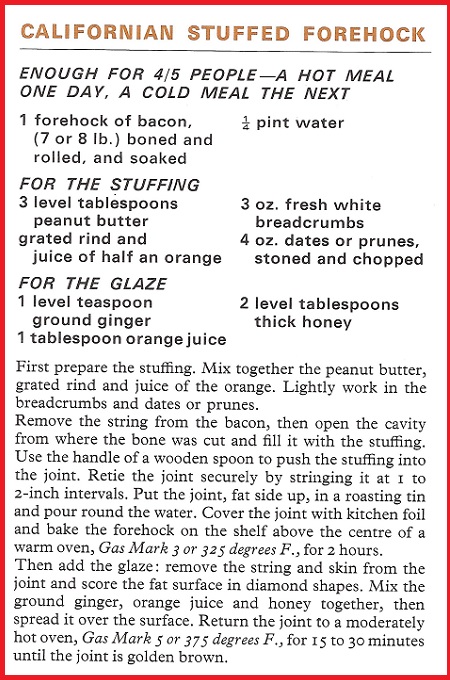
Enough for 4 people or one bacon lovin’ popstar!
From The King, to proper royalty, Mary Meredith also provides us with a dainty dish to set before a king. Four and twenty blackbirds anyone?
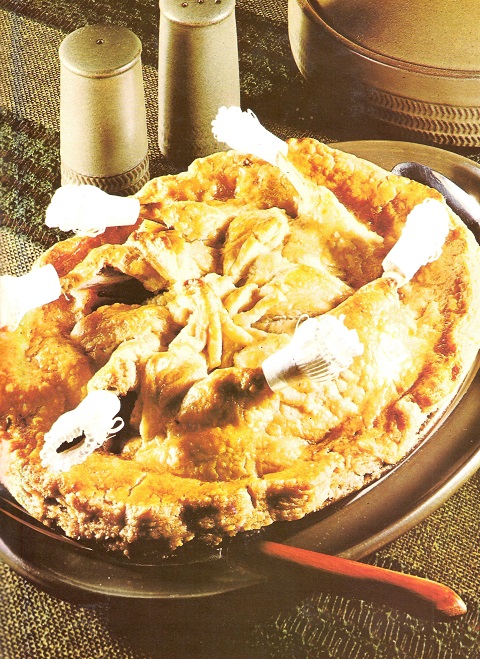
In fairness to Mary, it’s not actually blackbirds but a mix of lamb kidneys and cutlets. In fairness to modern sensibility, I was staring at this picture wondering how to describe the sheer awfulness of a pie with bones in little bootees sticking out of it. Mark looked at it over my shoulder. “You’re not making that are you?” he asked, sounding a little shaky. I assured him I was not. “Good” he said. “Because it looks fucking horrible.” Description problem solved.
Then, there are recipes for people who want their cakes to look like footwear. (Why? WHY???)

And recipes for people who want to traumatise their children. Never mind the chocolate-roll cats at the front, what are those weird shiny pink things with faces ? Apart from the stuff of nightmares?

I did however manage to find one group of people for who Mary was not catering for. I was searching the index of this book when, in the B’s, I came across:
- Baked Lemon Potatoes
- Batch of scones
It’s an odd way of listing these items but there were corresponding entries under L, P and S so whilst kooky, they weren’t entirely random. (But again, maybe something that should have been corrected in the 1981 edition.)
I also noticed under M:
- Making a jug of cocoa
Using this logic surely every recipe should be listed under M?
- Making Lettuce and lemon sandwiches
- Making Elvis Has Left The Building, etc.
And just to be really irritating there is no corresponding entry under C listing:
- Cocoa, Making a jug of
I’m sorry cocoa drinkers of the world, I guess if you were of a logical mind in 1981 and wanted to find out how to make a jug of your favourite drink (without having to scan through 499 other recipes), you were S.O.L.
I’m spending the weekend with a jug of margaritas… it was going to be cocoa but the recipe was too damn hard to find!
So much for an alcohol free April!
Whatever your tipple, have a great week.

